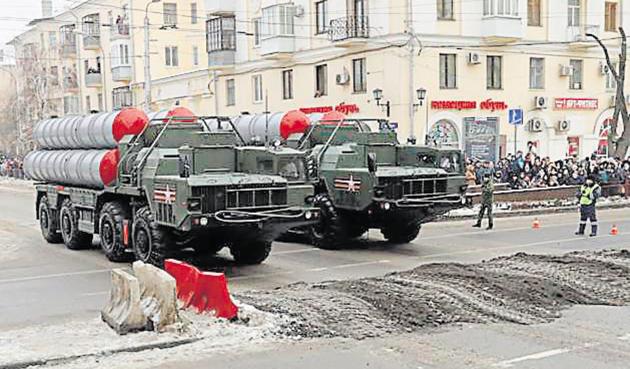India must continue to push for the US to accommodate its perspectives
India needs the autonomy to shape its relations with Russia in accordance with its political, economic and security interests
Media coverage of Russian President Putin’s visit to India earlier this month focused strongly on a US law, Countering America’s Adversaries Through Sanctions Act (CAATSA), and its implications for the India-Russia defence cooperation.

CAATSA originated from allegations, in the aftermath of President Trump’s election, of collusion between his campaign staff and Russia. This snowballed into a wider, bipartisan concern that he might undermine American security interests by allowing unwise concessions to Russia. A bill, introduced in the US Congress, sought to restrain President Trump from diluting the Russia sanctions regime, which was established after the 2014 “annexation” of Crimea and subsequent events.
As it progressed through Congressional deliberations, the bill developed a more ambitious objective — dovetailing sanctions with US commercial interests. The hitherto sanctions compelled companies in the US and European Union to deny Russia technologies, investments and financing in specified sectors and put restrictions on transactions in US dollar or Euro. The CAATSA bill introduced sanctions against third countries for “significant” transactions with Russia in defence and energy. The menu of sanctions includes technology denials, visa bans and access restrictions to US banking, currency and financing.
Official US briefings admit that, besides denying revenues to Russia, the principal focus of sanctions is on weaning business away from Russia and towards the US. India is the world’s largest arms importer, sourcing over 60% of its weapons from Russia. Its major defence purchases from Russia obviously attract the CAATSA scanner.
CAATSA is like a nuclear weapon, which is meant to deter but not to be used. The Indian government imports Russian weapons; if sanctions are slapped on it, it cannot buy weapons from other countries. It is the threat of sanctions that is expected to yield the desired result: thinking twice before negotiating a new Russian defence platform, exploring US alternatives and seeking CAATSA waiver on a transaction to transaction basis.
The US has so far imposed CAATSA sanctions only once: on a Chinese state-owned company that imported the S-400 air defence system. Since the US does not sell arms to China, these sanctions had the symbolic purpose of warning India against acquiring the system.
In implicit recognition of India’s situation, US officials acknowledge publicly that countries will not undermine their defence capabilities by suddenly discontinuing arms purchases from Russia. They indicate that, as long as these countries do not go in for new, “advanced” systems (like the S-400), there would be flexibility even in respect of new purchases, provided the overall share of Russian arms in their inventory is reducing (which it is, in India’s case). India-Russia defence deals in the pipeline — helicopters, frigates and rifles — should benefit from this.
There is also some flexibility now on “significant” defence transactions. As per provisions in the 2019 US defence budget, the President can waive sanctions, provided he certifies that it is in US national security interest and that the country concerned is reducing the share of major Russian defence equipment or cooperating on other critical US strategic interests.
The debate on whether such unilateral sanctions for political ends violate international law has no practical impact. The US will continue to pursue what it considers its national interest. The challenge for India is to safeguard its national interests.
A rigorous legal analysis of the restrictions imposed by CAATSA and other Russia-related sanctions can ensure that we do not forego business opportunities by over compliance. Specialised legal expertise on sanctions law in the US and European Union could be tapped.
India has to continue to strive for US accommodation of its perspectives. Its arguments are well known. The India-US strategic partnership is built on a strong mutuality of interests but it is not an alliance. The US has important interests in India: defence sales, vibrant market and convergent perspectives on the Indo-Pacific, which it would not want to sacrifice. India’s diversification of defence acquisitions has followed a consistent course, which predates CAATSA; the US has been the main beneficiary of it in recent years. The process cannot be rushed without damage to defence preparedness, but it can be accelerated by more emphasis on technology transfers than military sales. India needs the autonomy to shape its relations with Russia in accordance with its political, economic and security interests. CAATSA waivers should be based on this overall perspective and not on a case-by-case review of transactions.
Finally, India should be willing to make significant concessions on economic issues that President Trump keeps highlighting, in return for US understanding of our strategic perspectives.
PS Raghavan is a former diplomat, and convener of the National Security Advisory Board
The views expressed are personal






